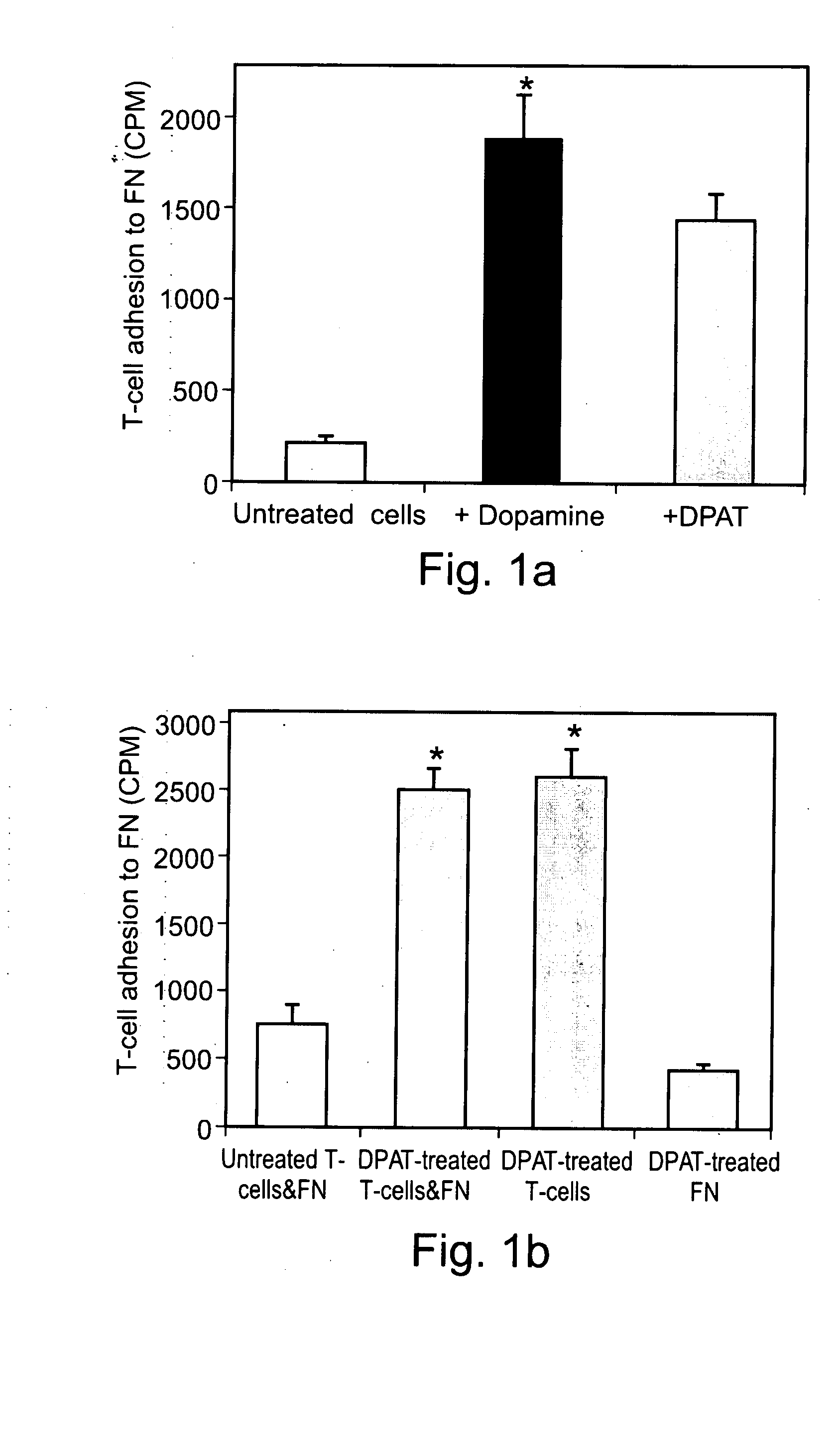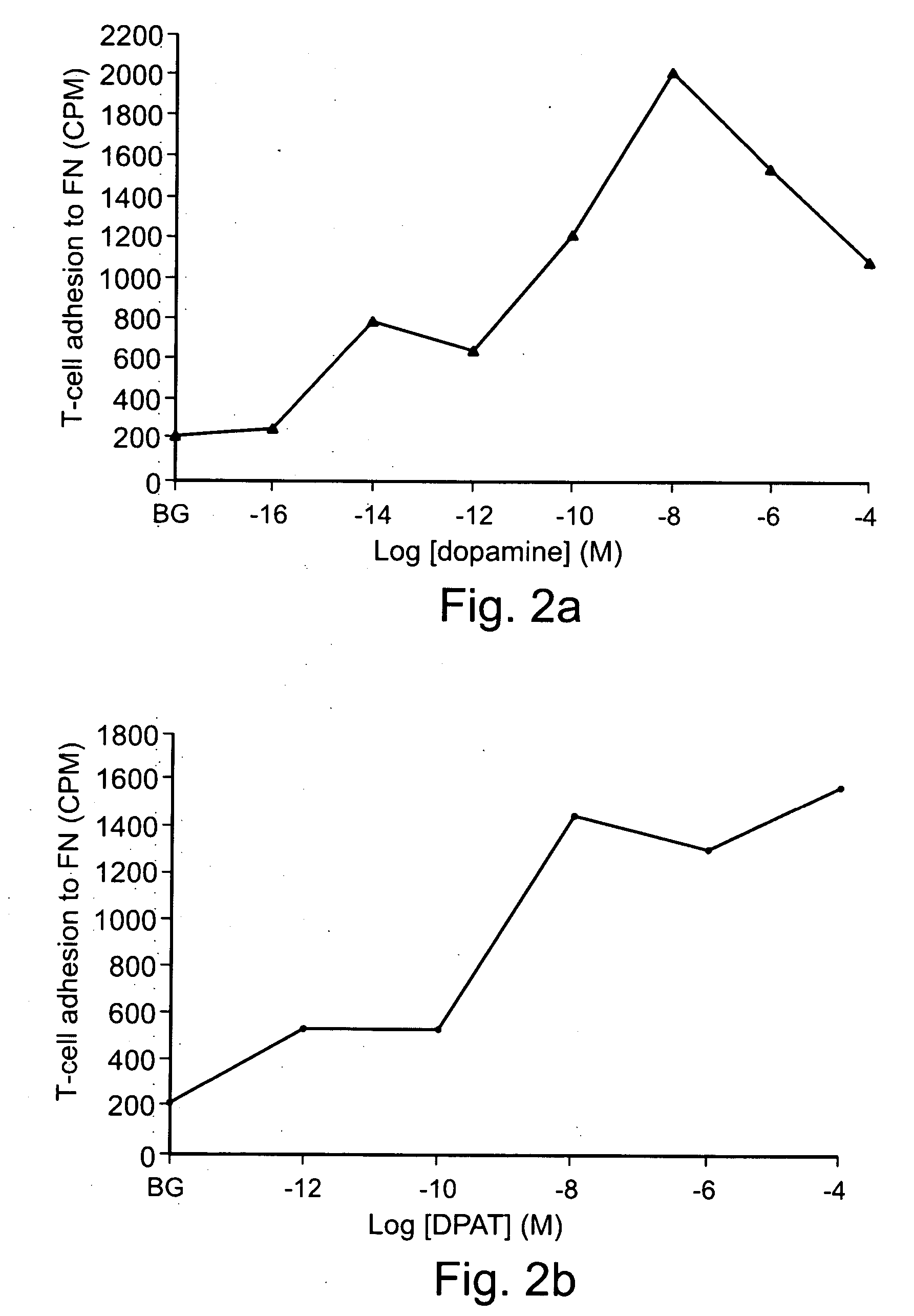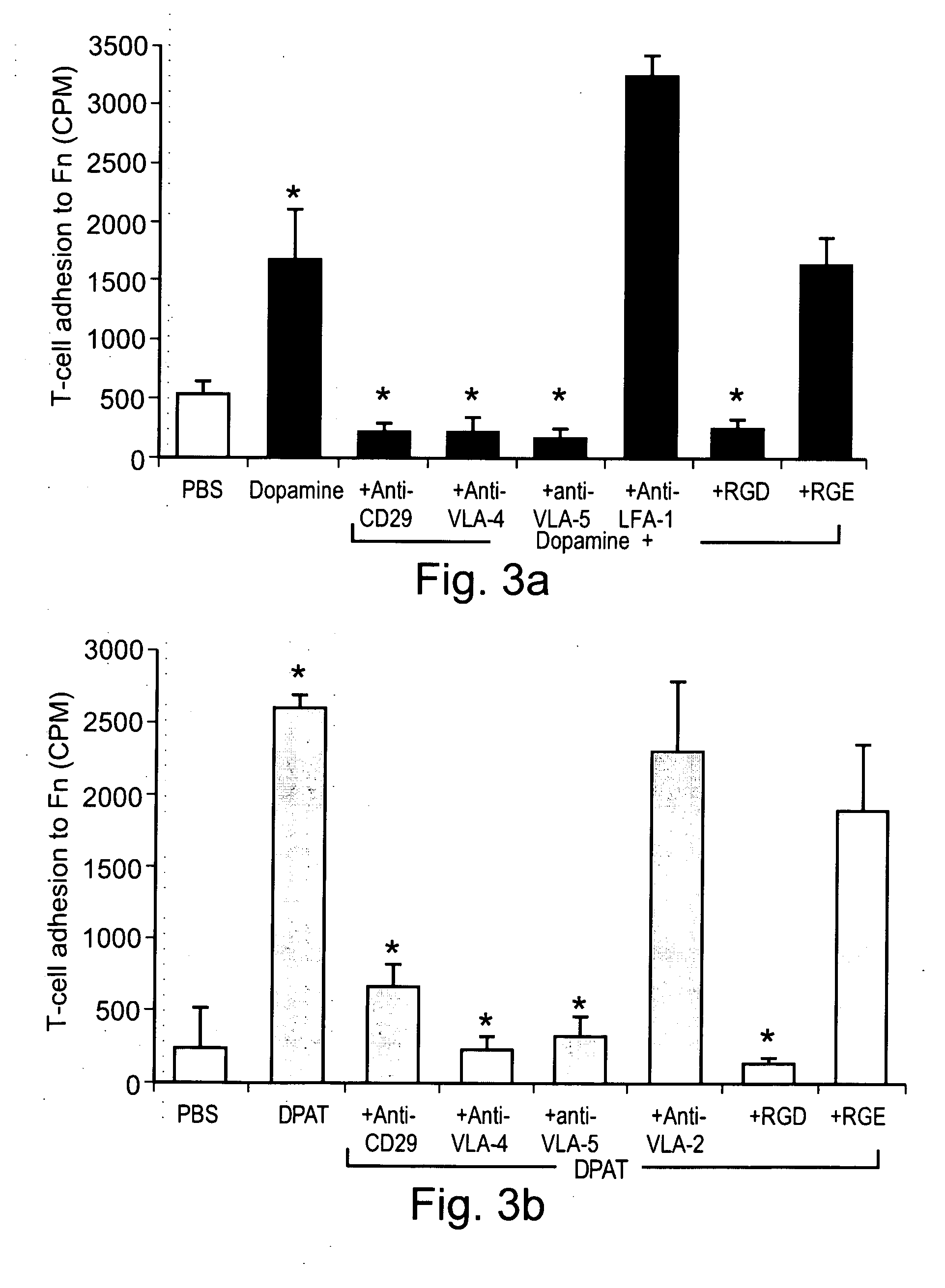Methods and pharmaceutical compositions for dopaminergic modulation of t-cell adhesion and activity
a technology of t-cell adhesion and activity, which is applied in the field of modulation of t-cell activity, can solve the problems of t-cell function being suppressed, leukocyte-endothelial interactions often have deleterious consequences for the host, and many detrimental clinical consequences, so as to suppress the activity of a t-cell population, suppress the function of t-cells, and suppress the effect of t-cell function
- Summary
- Abstract
- Description
- Claims
- Application Information
AI Technical Summary
Benefits of technology
Problems solved by technology
Method used
Image
Examples
examples
[0277] Additional objects, advantages, and novel features of the present invention will become apparent to one ordinarily skilled in the art upon examination of the following examples, which are not intended to be limiting. Additionally, each of the various embodiments and aspects of the present invention as delineated hereinabove and as claimed in the claims section below finds experimental support in the following examples.
[0278] Generally, the nomenclature used herein and the laboratory procedures utilized in the present invention include molecular, biochemical, microbiological and recombinant DNA techniques. Such techniques are thoroughly explained in the literature. See, for example, “Molecular Cloning: A laboratory Manual” Sambrook et al., (1989); “Current Protocols in Molecular Biology” Volumes I-III Ausubel, R. M., ed. (1994); Ausubel et al., “Current Protocols in Molecular Biology”, John Wiley and Sons, Baltimore, Md. (1989); Perbal, “A Practical Guide to Molecular Cloning...
example i
Dopamine Induces T-cell Adhesion to Fibronectin, by Direct Interaction with its Receptors
[0297] Can Dopamine interact directly with specific Dopaminergic receptors on normal human T-cells, activate β1 integrin function, and drive the cells into integrin-mediated adhesion to fibronectin, a major glycoprotein component of the extra cellular matrix (ECM)? To the best of our knowledge, Dopamine by itself was never shown to activate T-cell function.
[0298] The results, presented in FIG. 1A, show that Dopamine, in the absence of any additional molecules, induce substantial adhesion of normal human T-cells to fibronectin. Since only activated T-cells can adhere to fibronectin, these results suggest that Dopamine is able to activate T-cells in a manner that activates their β1 integrins. FIG. 1A also shows that the T-cell activating effect of Dopamine was mimicked by 7-Hydroxy-DPAT (DPAT), which is considered a selective Dopamine D3 receptor agonist, although it was recently shown to have t...
example ii
T-cell Activation by Dopamine and DPAT is Dose Dependent at Physiological Concentrations
[0300] In order for the observed effects of Dopamine on T-cell binding to fibronectin to be of physiological significance, increased response with greater concentrations and a concentration optimum consistent with actual physiological concentrations must be demonstrated. FIGS. 2A and 2B illustrate the dose-dependent nature of the T-cell adhesion induced by both Dopamine and DPAT, with an optimum reached at 10 nM, consistent with concentration optima observed in previous studies on the direct interactions of several neurotransmitters with T-cells (Clark, E. A. and Brugge, J. S., Eur J Pharmacol 1995. 272: RI-3; and Levite, M., Cahalon, L., Hershkoviz, R., Steinman, L. and Lider, O., J. Immunol 1998. 160: 993-1 000). Thus, T-cells are clearly responsive to physiological concentrations of the neurotransmitter Dopamine and it's analogs.
PUM
| Property | Measurement | Unit |
|---|---|---|
| Magnetic field | aaaaa | aaaaa |
| Molar density | aaaaa | aaaaa |
| Angle | aaaaa | aaaaa |
Abstract
Description
Claims
Application Information
 Login to View More
Login to View More - R&D
- Intellectual Property
- Life Sciences
- Materials
- Tech Scout
- Unparalleled Data Quality
- Higher Quality Content
- 60% Fewer Hallucinations
Browse by: Latest US Patents, China's latest patents, Technical Efficacy Thesaurus, Application Domain, Technology Topic, Popular Technical Reports.
© 2025 PatSnap. All rights reserved.Legal|Privacy policy|Modern Slavery Act Transparency Statement|Sitemap|About US| Contact US: help@patsnap.com



